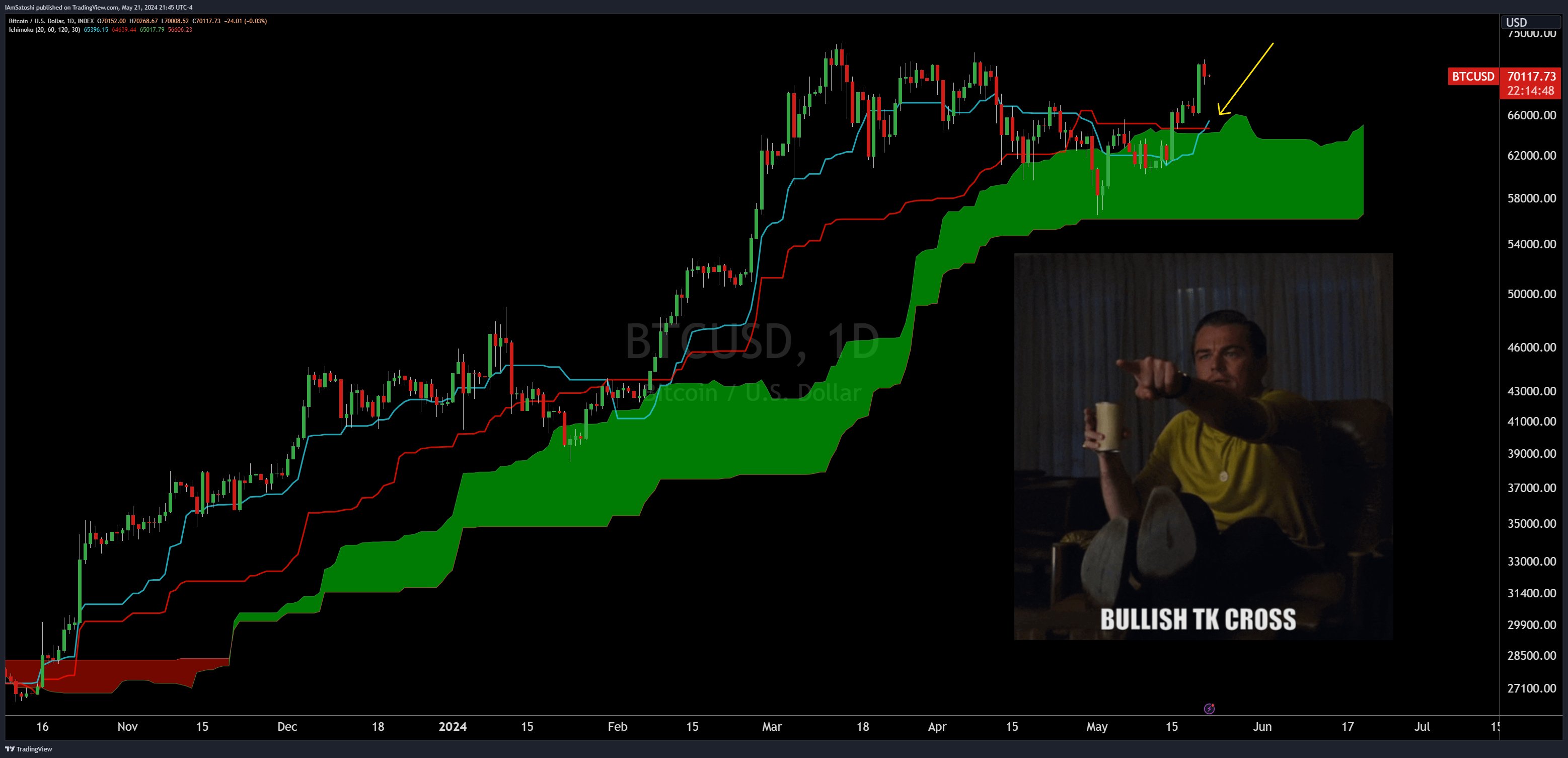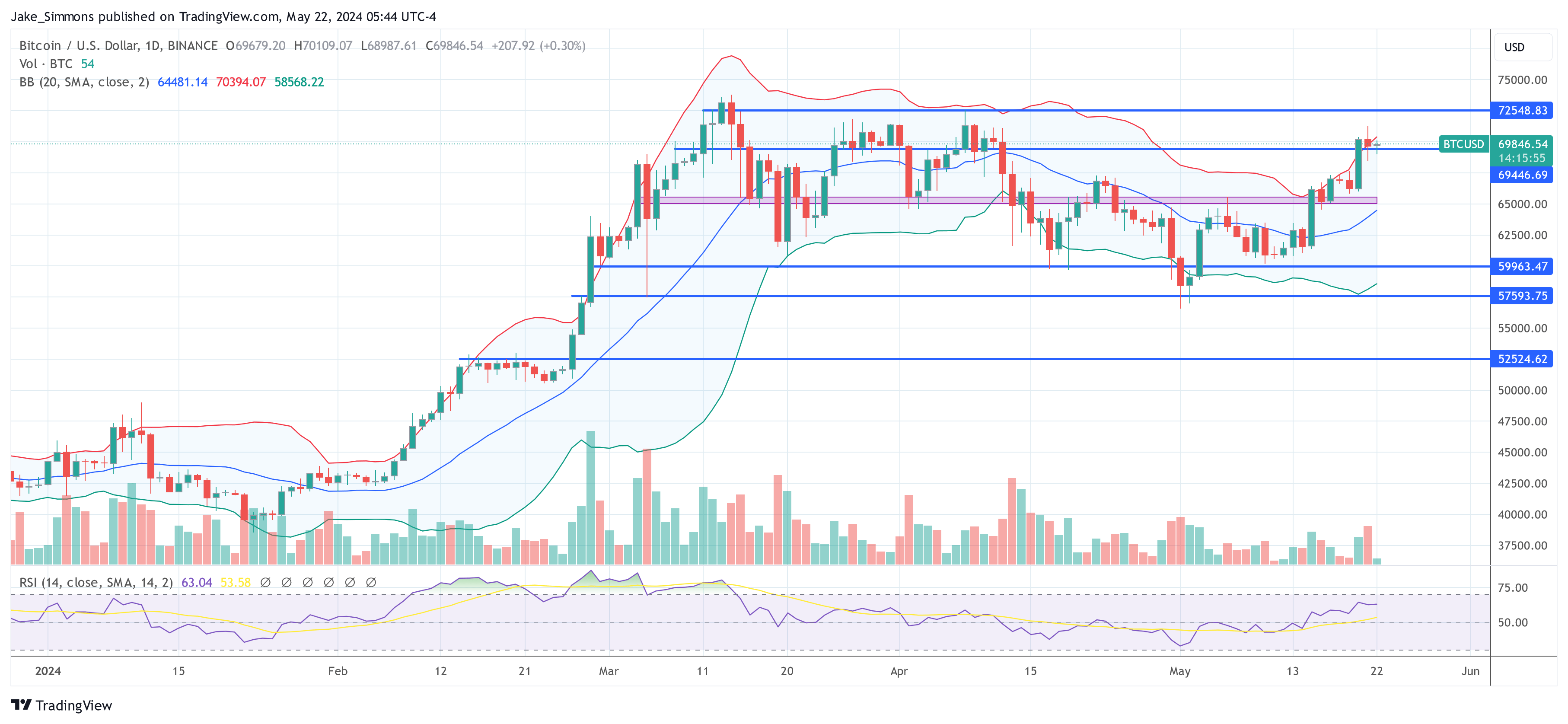The Bearish Argument By John Bollinger
Bollinger’s focuses on the daily BTC/USD chart. His main concern centers around a “two-bar reversal” pattern observed at the upper Bollinger Band. This pattern, typically indicating a potential reversal in price direction, occurs when Bitcoin’s price first exceeds the upper Bollinger Band but then closes within it during the next trading period. Such movements can imply that the upward momentum might be losing strength.
The Bollinger Bands on the chart consist of three lines: the lower band, the middle band (20-day simple moving average), and the upper band. These bands expand and contract based on price volatility, with the upper and lower bands set two standard deviations away from the middle band. The Bitcoin price peaked at approximately $71,977 on Tuesday, momentarily pushing above the upper Bollinger Band before closing back within it, forming the noted reversal pattern.
In his commentary, Bollinger has clearly stated that while the setup is not fundamentally bearish, the observed technical pattern warrants caution for short-term traders. He advises monitoring for either a consolidation period where the price stabilizes, or a pullback where it retreats from recent highs. “I am not fond of the two-bar reversal at the upper Bollinger Band for BTCUSD. Suggests a consolidation or a pullback. Not bearish here, just short-term concerned,” Bollinger remarked.
The Bullish Argument
On the contrary, renowned crypto analyst, Josh Olszewicz (@CarpeNoctom), shared a bullish outlook on Bitcoin through a different lens, focusing on the Ichimoku Cloud indicator in the daily chart. He a “Bullish TK Cross with Price Above Cloud” on the daily Bitcoin chart.
This particular pattern is significant within the realm of technical analysis, especially for those employing the Ichimoku Kinko Hyo indicator, a comprehensive tool that provides insights into market momentum, trend direction, and support and resistance levels. The “Bullish TK Cross” Olszewicz refers to occurs when the Tenkan-sen line (a short-term moving average) crosses above the Kijun-sen line (a medium-term moving average), indicating a potential uptrend. Typically, this crossover suggests that buying momentum is increasing and can signal the start of a bullish phase.















